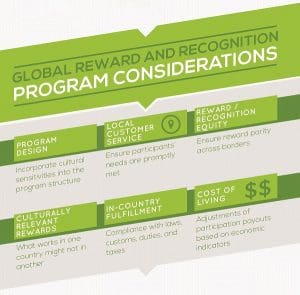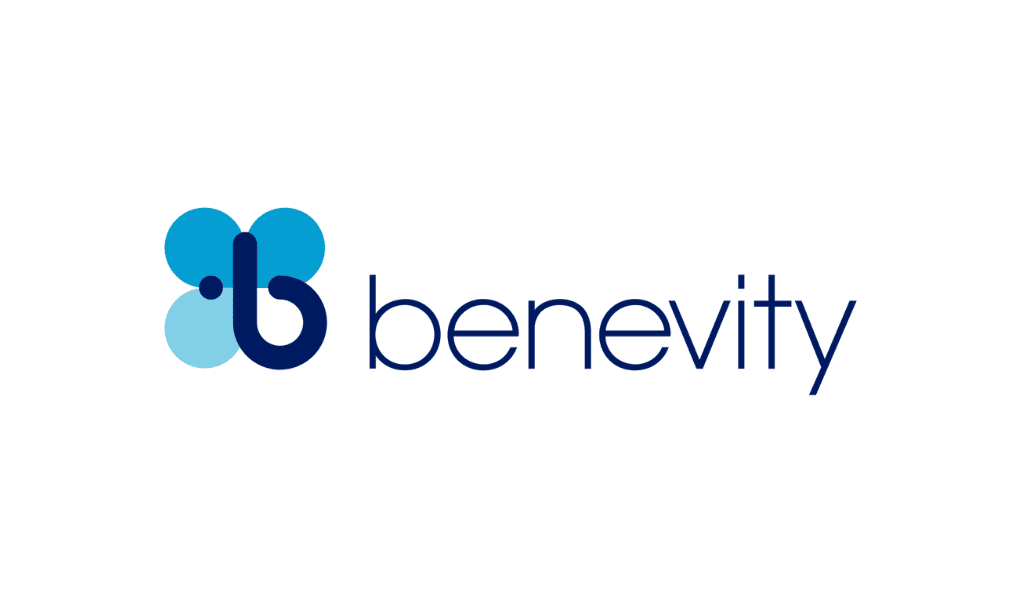Recognition can be a complex task but implementing an effective programme has multiple benefits.
By Belinda Sharr
Ambitious employees -no matter where they work around the globe -want their accomplishments highlighted. Recognition is an important part of the employee experience at a company, and studies have indicated that recognition is tied to great things -increased employee engagement and retention, and better business results. And what does this mean for the bottom line? In 2015, studies from Aon Hewitt found that a 5 per cent increase in employee engagement is linked to a 3 per cent increase in revenue growth in the subsequent year.
Productivity goes up as well. When employees receive recognition, they tend to perform better, says Alexandra Bode- Tunji, programme lead of people transformation at Transport for London.
“Employee engagement surveys indicate higher levels of engagement for teams where recognition is used regularly,” she says. “Staff members see recognition as a form of feedback and we [have noted] the need to step up recognition using leadership contact forums such as breakfast meetings with the managing director.”
Transport for London uses multiple types of awards to encourage employee engagement. It has a “Made a Difference Award” for philanthropy, an employee “Hall of Fame,” and the “Employee of the Month” or “Team of the Month” awards are used to motivate employees, Bode-Tunji, says. The company also has long-term service awards to recognise experience and contribution over the years.
Encouraging peer recognition is a simple act that has lasting effects. Laura Lewis, director of HR and development at Napp Pharmaceuticals, says peer appreciation is extremely effective on morale at her company. “Having colleagues from other departments say ‘well done’ has such a positive impact on the individual and also on others around them,” she says.

Further, she says the company believes employees who demonstrate a commitment to both their work and the organisation should be rewarded for their excellence. “With that in mind, we offer incentives and bonuses to our employees based on their contribution to their own individual performance, both addressing what they have achieved and also the behaviours and mindset they demonstrate and role model.”
Lewis says measuring the protection of investments on recognition can be done when looking at the engagement of the workforce. The company uses employee surveys to assess employee satisfaction, and also hosts employee award ceremonies, which are developed from documented employee appreciation of each other.
“We ensure that we discuss our recognition approaches regularly and listen to feedback from our employees. By seeing high levels of engagement, we are confident that our approach is successful,” she says.
Unique Methods
An effective reward strategy needs to be unique to every company -in order to be an efficient process it must fit with the organisations’ needs and goals.
“One size never fits all, and you must do your homework,” says Theresa Harkins, vice president of client success and engagement solutions at Inspirus. Corporations need to ensure the rewards programme is accessible to everyone in the organisation. She recommends the following steps to building a strong process:
• Craft a recognition strategy;
• Have buy-in from the executive and management teams;
• Define programme objectives;
• Establish success measurements; and
• Communicate the plan effectively.
Giving employees the ability and opportunity to show their uniqueness and recognise one another is a best practice around recognition, says Mike Ryan, senior vice president of client strategy at Madison Performance. “Make it as localised as possible, with managers leading and others observing. We’re seeing that it’s very important to maintain horizontally-strong organisations, and giving employees opportunities to build relationships,” he says.
In order to maximise the working results, recognition must be implemented at the very beginning of an employee’s career with an organisation. “When onboarding new employees, it should start very early in process,” Alex Alaminos, managing director of Madison Performance, says. “It needs to be built into the culture for the right values that drive the analytics of the organisation.” One way to begin recognising employees in the early days on the job is to give them a sense of belonging, and inspiring them to ask “how can I contribute to success of the organisation?” If they feel they are part of the company’s achievements from the beginning they are more likely to stay engaged and retained.
Corporate Culture
For recognition to be meaningful and credible, it must reflect both the culture of the country and that of the company.
“It should be [part of] building company culture, and set individuals on their own path -and on the path that supports corporate global goals,” Judd Weisgal, senior vice president of sales at Madison Performance says. “Companies need to make sure recognition programmes are applied appropriately and in a meaningful way -it’s how you build your organisation.”
There are tools that every HR manager needs to implement a great reward plan. “The best way to do this to empower the local offices with a variety of tools to allow them to deliver recognition in meaningful ways to their workforce,” says Harkins. Some effective recognition tools include electronic recognition, public recognition, merchandise, gift card rewards, learning opportunities, parking spaces, health challenges, time off, and more.
When designing a plan for organisations with multiple locations, it is important to consider and incorporate cultural sensitives “When employees reside in different countries, ensure reward parity by adjusting payouts based on economic indicators,” says Jordi Prats, vice president of global rewards at Maritz Motivation Solutions. “Include culturally relevant rewards, because what works in one country might not work in another country.”
Specifically, Asian and European cultures differ from those in other parts of the world, and from one another. Asian culture tends to prefer recognition as a group effort, whilst Europe favours the individual. It’s essential for a company to understand general likes and dislikes of employees in their organisation -as every workplace is unique
“Some cultures prefer more team-oriented recognition, as individual recognition can be perceived as boastful,” says Peter Hart, CEO of Rideau. “Other cultures prefer their recognition to be inclusive of family members as receiving [it] in front of your parent or child is the ultimate tribute to your contributions.”
One of the biggest differences that presents itself in many Asian cultures is how an award is presented, says Jeff Gelinas, vice president of product and people at Engage2Excel. For example, HR executives need to know if employees are comfortable with public recognition, or if they feel more at ease with a one-onone meeting or email acknowledgement. These predilections may vary from region to region and company to company.
“As the employer, you need to enhance the recognition experience by assimilating into the branding and language people expect,” Gelinas says. “An effective practice is manager involvement. If managers are trained and feel like an integral part of the recognition solution, they will be more likely to promote it to their team members.”
Recognition needs to mold itself to the cultural atmosphere of its employees -especially when engaging team members in Asia and Europe. “It is critical to have a local voice on the ground that understands appropriate messaging, effective awards, and logistics like taxes and invoicing,” Gelinas says.
Cash Isn’t King
Money isn’t always a driver of employee engagement. In fact, 2017 looks to bring in recognition trends that are not payroll-related.
“Financial rewards are best reserved for elements of variable compensation, not recognition. Or are there other ways to reward employees without payroll involvement?” Harkins says. Practical, non-tangible recognition efforts that don’t include payroll might be celebrations, lunches, learning opportunities for conferences, upgrades to office equipment, handwritten notes, or tickets to a special event.
Gelinas says that people tend to be more motivated by experiences, rather than items. An experience can be remembered, whilst an object can be lost. Some unique experiences may include browsing a catalog and selecting a 10- year gift, or redeeming earned points for a weekend getaway in London. “Experiences are meaningful,” he says. “Research by the Aberdeen Group shows that cash awards are not part of these motivational experiences and have little to no lasting effect.”
Data-Driven Results
Data and analytics are important tools to consider when creating a programme, according to Hart. He notes that one of the best practices he sees often ignored by companies is recognition data collection and analytics.
“Most don’t understand the value of the intrinsic recognition data they probably are already capturing and what analysing that data can do for their business,” he says. “Every nomination, every award given, every kudos sent around the company and seen by others (called “social recognition”) is a recognition touch point.”
Hart says collecting touchpoint data and understanding the data’s scientific analysis can be used to help companies achieve their key performance indicators by identifyingaccomplished managers and business units that are working well, as well as those who need improvement.
Reverse Recognition
An effective recognition service doesn’t just have positive effects on the employees who are being recognised -the executives who are awarding workers get something out of it too.
Benefits for HR executives are two-fold: intrinsic and tangible results, according to Gelinas. First, a recognition plan allows HR executives to forge a connection with individual teams and the workforce as a whole. It takes executives away from the data and gives them the opportunity to interact with employees as they present awards for excellence, length of service, wellness, etc. Secondly, HR executives often find it difficult to prove a return on investment, but with recognition, they can.
“A successful recognition programme will give HR the analytics necessary to prove how such programmes specifically increase employee engagement and positively affect business performance,” he says. “This tangible evidence is an invaluable resource to HR executives.”
No matter where a company is located in the world, recognition is an important strategy to implement -if organisations want to succeed both in revenue and in retaining engaged employees. Think globally, but put recognition into effect locally. After all, according to Alaminos, “Recognition [itself] is a global event.”














